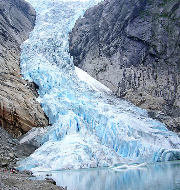What is “The Great Unconformity”?
Scientists have recently made significant strides in understanding “The Great Unconformity,” a geological phenomenon characterized by missing sections of the Earth’s crust in the geological record. This mysterious gap has now been linked to intense glacial erosion during a period known as “Snowball Earth.”
Glacial Erosion and Sedimentary Record Gap
The process of glacial erosion during the ancient “Snowball Earth” period played a pivotal role in creating a substantial gap in the sedimentary record. First observed in 1869 at the Grand Canyon in Arizona, this geological anomaly was identified by experts who noticed a sudden change in the age of rocks, a pattern found globally. Recent studies estimate that 3-5 kilometers of rock were eroded globally due to glacial activity, leaving a billion cubic kilometers of pre-Cambrian material missing from the records.
Extensive Erosion Before the Phanerozoic Era
The proposed theory suggests that more extensive erosion occurred before the Phanerozoic era than previously believed. The Phanerozoic, spanning from 538.8 million years ago to the present, is the current geological eon. Evidence, including isotopes of hafnium and oxygen found in crystals from that era, supports the idea that these materials were eroded from old rock and deposited at low temperatures. The theory also explains the scarcity of asteroid craters older than 700 million years.
Glacial Transport to the Sea
Researchers argue that the glaciers responsible for eroding sedimentary rocks also transported them to the sea. This insight provides a plausible explanation for the current whereabouts of the missing rocks. The discovery not only enhances our understanding of Earth’s ancient history but also sheds light on the dynamic processes that have shaped the planet’s geological landscape.
Month: Current Affairs - December, 2023
Category: Science & Technology Current Affairs








